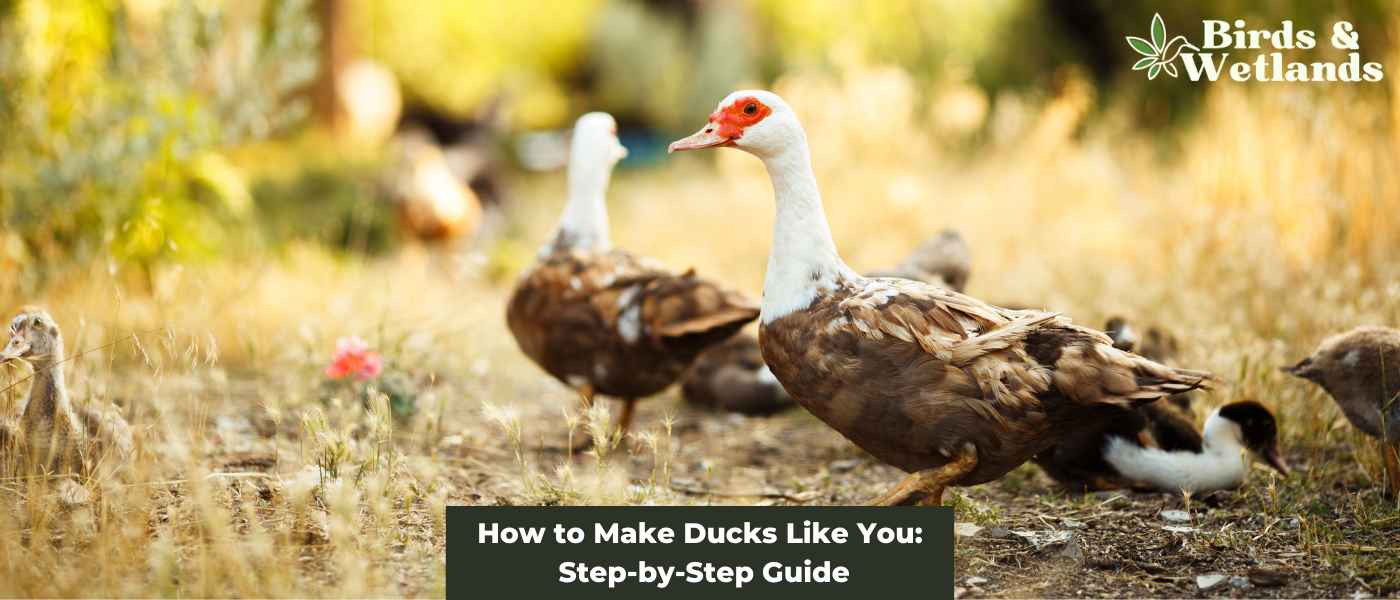Ducks are popular domesticated birds that make great pets. If you want to raise ducks, gaining the trust and affection of ducks can be challenging, especially if you are are a beginner.
Building trust with ducks involves patience, consistency, and gentle interaction. Regular feeding can help, but it’s important to provide appropriate duck feed rather than harmful foods. Spend time near them without making sudden movements, and talk softly to help them get used to your presence. With time, they may grow more comfortable with you.
Key takeaways
Ducks require a lot of interaction to build trust, unlike chickens which tend to trust more easily.
Spend as much time as possible with the ducks from a young age, even if it involves just being in the same room for a few minutes each day – you will soon will a duck’s heart.
Ducks tend to dislike being handled, especially if they’re not used to it. However, frequent handling from a young age can help them get used to it and will help to tame ducks.
While handling pet ducks, try to pick them up and hold them regularly, despite their initial resistance. This can help them get accustomed to being touched and handled.
Hand feeding is a great way to build trust. Offer treats, like mealworms, by hand.
Spend time with ducks outdoors. This could involve sitting with a bowl of food or water in the yard and allowing the ducks to come to you, remember they need a pond to swim but even a baby pool can be used.
Ducks can also be conditioned to associate you with food and water, reducing fear and building trust.
You can also hand-feed their regular meals to ducks daily. This can help them associate you as a positive element and not a threat.
Early desensitization is crucial for ducks to get comfortable with being handled. Without this, ducks might resist and become fearful when picked up.
Step by Step Guide
Spend Time with Them
From the moment you receive your ducks, dedicate as much time as possible to being around them. This can mean setting up their brooder in a space where you frequently spend time, like your home office. They’ll get used to your presence, even if you’re just sharing the same space and not physically interacting all the time.
Regular Handling
Ducks are often resistant to being handled, especially at the beginning. However, by picking them up and holding them regularly, they can gradually get used to this kind of interaction. Always handle them gently and securely, making sure to support their body.
Vocal Interaction
Talking to your ducks can help familiarize them with your voice and further build trust. This can be done whenever you’re around them – working, feeding, or even just observing.
Hand Feeding
Offering food directly from your hand is another effective method to gain their trust. Start by offering treats like mealworms. They’ll begin to associate you with feeding and, thus, a positive experience.
Outdoor Interaction
Once your ducks are comfortable around you indoors, start spending time with them outside. Sitting with a bowl of food or water in your yard can encourage them to approach you in an open environment.
Encourage Physical Interaction
As your ducks become more comfortable with your presence, encourage them to climb on you or even sleep on your lap. This physical interaction can strengthen their trust and comfort with you.
Hand Feed Regular Meals
Extend the hand feeding from treats to their regular meals. This not only reinforces you as a source of food and thus positivity but also provides further opportunities for physical interaction and necessary for raising friendly ducks.
Understanding Ducks
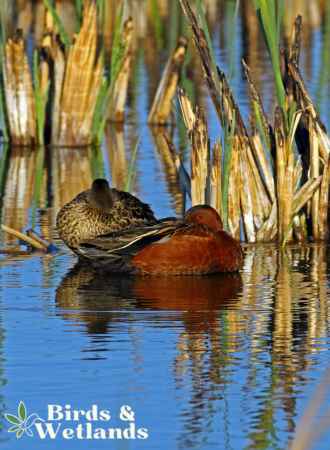
Ducks are intelligent and social animals that are capable of developing strong bonds with humans. To raise friendly ducks, it is essential to understand their behavior and preferences, especially if you have multiple ducks and duck breeds.
Social Animals
Ducks are social animals that live in groups called flocks. They rely on each other for safety, warmth, and companionship. In the wild, ducks form strong pair bonds during the breeding season, which can last for several years. They communicate with each other through a variety of vocalizations and body language, which can convey different emotions such as fear, aggression, and affection.
Domesticated Ducks
Domesticated ducks are bred for meat, duck eggs, and ornamental purposes. Raised ducks are different from their wild counterparts in terms of behavior and physical appearance. Domesticated adult ducks are more docile and less wary of humans, making them easier to handle and train.
They also come in a wide variety of breeds, each with its own unique characteristics and not all ducks are docile!
Duck Breeds
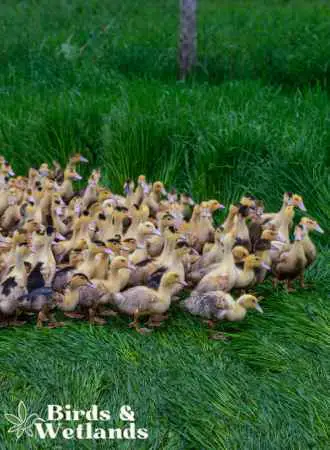
There are many different duck breeds, each with its own unique personality, appearance, and purpose. Some breeds are better suited for egg production, while others are bred for meat or ornamental purposes. Here are some popular duck breeds:
| Breed | Characteristics |
|---|---|
| Pekin | Large, white, docile, good for meat and egg production |
| Muscovy | Large, black and white, quiet, good for meat production |
| Runner | Tall and slender, good for egg production |
| Khaki Campbell | Medium-sized, good for egg production |
| Rouen | Large, colorful, good for meat and ornamental purposes |
Building Trust with Ducks
Ducks are social animals and can quickly learn to trust humans if treated with patience and kindness. Building trust with ducks can be a rewarding experience that requires time, effort, and consistency. Here are some tips on how to build trust with ducks.
Feeding Ducks
One of the easiest ways to build trust with backyard ducks is by feeding them, especially when they are tiny ducklings. Ducks are opportunistic feeders and will quickly learn to associate you with food.
However, it is essential to feed ducks with the right food. Bread is not a suitable food for ducks as it lacks essential nutrients and can cause health problems. Instead, feed ducks with grains such as cracked corn, wheat, and barley. You can also feed ducks with vegetables such as lettuce, kale, and spinach.
Treats for Ducks
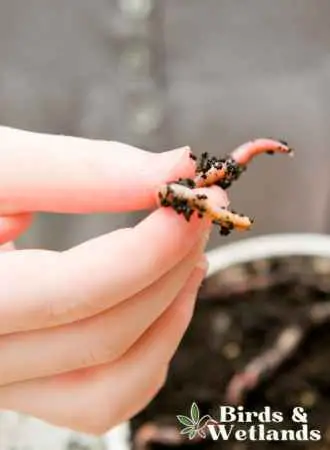
Offering treats to ducks is another way to build trust with them. Treats can be used as a reward for good behavior or to encourage ducks to approach you. Some of the treats that ducks enjoy are dried mealworms, tomatoes, and grapes. You can also offer ducks some chopped vegetables such as carrots and peas.
Bonding with Ducks
Bonding with ducks is a gradual process that requires patience and consistency. Start by sitting near the ducks and observe their behavior. Ducks are curious animals and will eventually approach you if they feel safe.
Once the ducks are comfortable with your presence, you can start interacting with them. Gently stroke their feathers or offer them treats from your hand. Avoid sudden movements or loud noises that can scare the ducks.
Interacting with Ducks
Ducks are social creatures and can be quite friendly if treated with care and respect. Here are some tips for interacting with ducks:
Petting and Cuddling Ducks
Ducks may enjoy being petted and cuddled, but it’s important to approach them gently and calmly. Start by offering them food to gain their trust. Once they are comfortable with you, you can try petting them gently on the head or back. Avoid grabbing them or squeezing them too tightly, as this can cause them stress or injury.
Playing with Ducks

Ducks are playful animals and enjoy activities like swimming, splashing, and chasing after objects. You can provide them with toys like floating balls or small plastic pools to play with. You can also play games with them, like throwing food into the water and watching them dive for it.
Raising Ducks as Pets
Raising ducks as pets can be a rewarding experience, but it requires a lot of care and attention. Before getting ducks as pets, make sure you have enough space for them to live and roam. Ducks need access to water for swimming and cleaning themselves, as well as a safe and secure shelter to sleep in at night.
When raising ducks as pets, it’s important to provide them with a balanced diet of grains, vegetables, and protein. You should also keep their living area clean and free of debris, and monitor their health regularly.
The Dos and Don’ts of how to train a duck
Do’s of Training a Duck
- Start Early: Begin training ducks when they are still young, as ducklings are more receptive to bonding and learning.
- Spend Time with Them: Ducks are social creatures. They’ll become friendlier and more comfortable with you if you spend quality time with them daily.
- Consistent Feeding: Always be the one to provide their meals. Ducks are likely to bond with the individual who regularly feeds them.
- Use Treats for Training: Healthy treats, like leafy greens, shredded lettuce, fresh herbs, or dried mealworms, can be effective rewards when training your duck. This positive reinforcement encourages them to repeat desired behaviors.
- Handle with Care: Ducks need to feel secure when you handle them. Always support them properly, ideally with one hand under the chest and the other supporting the back.
- Be Patient: Training takes time, and every duck learns at its own pace. Don’t rush the process.
- Create a Safe Environment: A secure duck house, a baby pool for swimming, and a space for them to forage will make your ducks feel safe and comfortable.
Don’ts of Training a Duck
- Avoid Forceful Handling: Never force a duck to be held or petted. Sudden or forceful movements can scare them and damage the bond of trust you’re trying to build.
- Don’t Starve or Dehydrate Them: Ensure they always have access to quality duck feed and fresh water. Their health and well-being should be your top priority.
- Avoid Loud Noises: Ducks can be easily startled by loud sounds. Try to keep the environment peaceful.
- Don’t Neglect Individual Personalities: Ducks have individual personalities just like humans. Not all ducks will react the same way to training methods, so adapt your approach accordingly.
- Don’t Introduce New Ducks Suddenly: If you’re introducing a new duck to the flock, do it gradually to avoid distressing the established group.
- Avoid Harmful Treats: Be sure you know what’s safe for ducks to eat. Some human foods can be harmful to them.
- Don’t Expect Immediate Results: Training and taming ducks requires patience. Don’t be discouraged if progress seems slow. The key is to remain consistent and gentle in your approach.
Understanding Duck Behavior

Ducks are fascinating creatures with unique behaviors that can be both entertaining and informative. Understanding their behavior is crucial if you want to make them like you. In this section, we will explore some of the most common behaviors of ducks.
Duck Communication
Ducks are social animals and communicate with each other using a variety of sounds and body movements. Here are some common communication methods used by ducks:
Head bobbing: Ducks may bob their heads up and down to express happiness, greet another duck, or as a mating signal. When they bob their heads left to right, it means they’re angry or warning other ducks to keep distance.
Quacking: Ducks use quacks to communicate with each other. They have different types of quacks for different situations, such as a loud quack to warn of danger or a soft quack to call their ducklings.
Body language: Ducks use body language to communicate their feelings. For example, when a duck is relaxed, it will sit with its wings slightly open. When it’s angry or threatened, it will puff up its feathers and make itself look bigger.
Duck Sleep Habits
Ducks love to sleep and cuddle, which is another effective way to display their affection. Ducks are inherently vulnerable while they sleep in the wild because of their stance.
They sleep with one eye open and one eye closed, and their brains are “split” into two halves, with each half controlling a single eye. One half of a duck’s brain can enjoy restful sleep while the other half, the part with the open eye, remains on high alert for predators.
Duck Mothering Ability
Ducks are excellent mothers and fiercely protective of their young. They have a strong maternal instinct and will do anything to protect their ducklings.
They will lead their ducklings to water, teach them to swim and hunt for food, and keep them warm and safe. A mother duck will even use her own body heat to keep her ducklings warm.
Caring for Ducks
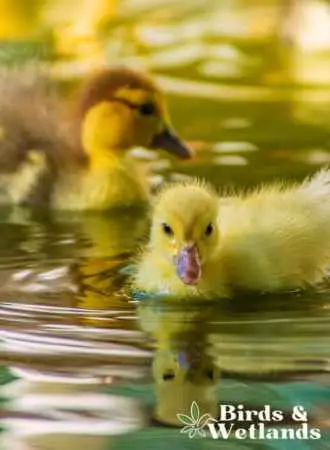
When it comes to caring for ducks, there are a few key things to keep in mind. From providing a safe and comfortable living space to protecting them from predators, here are some tips to help you care for your ducks.
Duck Coops and Pens
Ducks need a safe and secure place to live, especially at night when they are most vulnerable to predators. A duck coop or pen should provide protection from the elements and predators, as well as enough space for your ducks to move around and exercise.
When choosing a location for your duck coop or pen, make sure it is well-drained and away from any areas that may flood. Ducks also need access to water, so consider placing your coop or pen near a pond or other water source.
TRIXIE Pet Products Natura Duck Coop
Are you looking for a reliable, safe, and accommodating living space for your ducks? The TRIXIE Pet Products Natura Duck Coop is the perfect abode that combines function, comfort, and durability, ensuring your ducks enjoy their surroundings.

Pros
- Spacious Design: The TRIXIE Pet Products Natura Duck Coop provides ample space for your ducks to roam and rest comfortably, promoting their well-being and happiness.
- Convenient Cleaning: With a pull-out plastic tray, this duck coop makes cleaning a breeze, helping maintain hygiene without the usual hassles.
- Robust Construction: Made of glazed pine, this coop is built to withstand the elements, ensuring a long-lasting and sturdy home for your ducks.
- Security: The hinged roof with locking arm can be opened from above, providing easy access while also ensuring your ducks’ security against potential predators.
- Easy Assembly: With all necessary hardware included and a detailed instruction guide, setting up your TRIXIE Pet Products Natura Duck Coop is a simple and straightforward process.
Cons
- Size Limitation: While the TRIXIE Pet Products Natura Duck Coop offers ample space, it may not be suitable for a large flock of ducks. Owners with a significant number of ducks may need to consider additional or larger housing options.
- Lack of Insulation: The design of the coop may not provide adequate insulation in extremely cold climates. Additional measures may be necessary to keep your ducks warm during harsh winters.
Duck Predators
Predators are a common threat to ducks, so it’s important to take steps to protect them. Some common predators of ducks include raccoons, foxes, and birds of prey.
To protect your ducks from predators, make sure your coop or pen is secure and has no gaps or holes where predators can enter. You can also install fencing or wire mesh around your coop or pen to keep predators out.
Motion-Activated Animal Repellent & Sprinkler
Protect your ducks and other wildlife on your property with an innovative, eco-friendly motion-activated alert sprinkler.

Pros
- Humane and Effective: The Havahart 5277 sprinkler offers a non-toxic, chemical-free solution to alert you when ducks or other animals are near, ensuring their safety.
- Motion-Activated: Equipped with an infrared sensor, this device detects movement up to 35 feet away and releases a burst of water to catch your attention and help protect the animals.
- Adjustable Settings: Customize the sensitivity of the motion sensor and the spray duration to suit your specific needs and prevent false triggers.
- Easy Installation: The device is easy to set up and connects to a standard garden hose, making it simple to deploy in any area of your property.
- Environmentally Friendly: Powered by solar energy and utilizing water as an alert system, the Havahart 5277 is a sustainable and eco-conscious choice for your yard.
Cons
- Limited Coverage: The motion sensor covers a 100-degree arc, which may not be sufficient for larger areas or properties with multiple entry points for animals.
- Weather-Dependent: Since the device relies on solar power, its effectiveness may be reduced during periods of extended cloud cover or in heavily shaded areas.
FAQs on how to get ducklings to like you
What are the steps to establish a bond with tiny ducklings?
Building a connection with tiny ducklings involves investing a lot of time raising them from a young age. If you’re aiming to raise friendly ducks, it’s important that you are the one offering their meals and refreshing their water bowl.
Hand feed them with quality duck feed and offer healthy treats, such as leafy greens, shredded romaine lettuce, and dried mealworms. Begin communicating with them consistently, so they start identifying your voice. Every so often, stroke them gently to make them comfortable with your touch.
How can you tame ducks from a young age?
Taming ducks, particularly baby ducklings, calls for patience and mild engagement. Begin by spending time near their duck house, being careful not to make sudden movements that might frighten them. Then, introduce hand feeding with a blend of quality duck feed and nourishing treats like fresh herbs. As they start trusting you more, you can begin to hold them cautiously, ensuring to place one arm underneath for support.
Is it possible for ducklings to bond with humans?
Yes, indeed, ducklings can form a bond with humans, especially if that human is their primary caregiver. This bond becomes stronger if you raise ducks from when they’re little. Ducks are social creatures and will quickly recognize the person who provides for their needs, cleans their duck house, and spends time with them daily.
Do ducklings appreciate being held?
Initially, ducklings may not enjoy being held as they are instinctively wary. But with regular and gentle handling from a young age, they can get used to and even start to like it. It’s crucial to support their body properly when lifting and holding them to prevent causing them discomfort or injury.
Which parts do ducks prefer to be petted?
Every duck has its preferences, but many seem to enjoy being petted on their backs and under their chin. Always approach your duck slowly and gently, and ensure they are comfortable with the contact. Avoid touching their wings and tail as these areas can be quite sensitive.
What’s the timeframe for a duck to form an attachment to you?
The duration it takes for a duck to form an attachment can differ based on the duck’s personality and the quality time spent together. With daily interaction from a young age, a bond may start to form within a few weeks. However, deeper trust and attachment could take several months to develop.
Which are the friendliest duck breeds?
Some breeds are known to be friendlier and more comfortable with domestication than others. For instance, Welsh Harlequin, Pekin, and Khaki Campbell ducks are frequently noted for their friendly nature and can be so much fun, but remember you can’t just have one duck, you need at least two ducks or three ducks for them to be happy.
How should you introduce a new duck to an existing group of ducks?
Introducing new ducks to a pre-existing group should be a gradual process. Start by allowing the new and older ducks to see each other without any physical contact, perhaps through a fence. Once they seem accustomed to each other’s presence, permit brief, supervised encounters. Be prepared to step in if any signs of aggression occur. Over time, they will typically accept each other.

